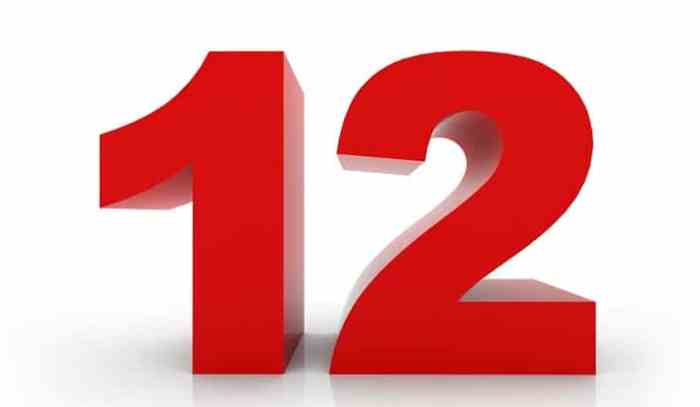Stop being mediocre because of picking the wrong battlefield. This journey delves into the often overlooked factor of choosing the right path. It’s not just about effort; it’s about aligning your goals with the right arena for success. We’ll explore the subtle traps of a mismatched battlefield, the consequences of mediocrity in various aspects of life, and empower you to recognize when it’s time to adapt and pivot.
Mediocrity isn’t always about lack of effort; sometimes it’s about choosing the wrong field of competition. This insightful exploration helps you understand the difference. From career choices to personal relationships, we’ll examine how choosing the wrong “battlefield” can lead to stagnation and disappointment. We’ll analyze different perspectives on defining success, examining how societal pressures and personal aspirations intertwine.
This isn’t about giving up, but about making conscious choices to maximize your potential.
Defining Mediocrity in Different Contexts

Mediocrity, a concept often bandied about in discussions of success and achievement, isn’t a monolithic entity. Its meaning shifts significantly depending on the context. It’s not simply a lack of brilliance; it’s a nuanced understanding of performance relative to expectations and potential. This exploration delves into the multifaceted nature of mediocrity, examining its manifestations across various domains of life.The perception of mediocrity is deeply intertwined with individual aspirations, societal norms, and the specific field of endeavor.
What might be considered mediocre in one context could be quite commendable in another. Understanding this relativity is crucial to avoid misjudgments and to foster a more accurate self-assessment.
Career Mediocrity
Career mediocrity often manifests as a lack of ambition, a stagnation in skills development, and a failure to leverage available opportunities. It’s not necessarily about poor performance, but rather a consistent underperformance relative to one’s capabilities and the demands of the field. Employees experiencing career mediocrity might exhibit a reluctance to take on challenging tasks, a lack of initiative, and a general disengagement from their work.
This can lead to feelings of frustration and a perceived lack of fulfillment.
Relationship Mediocrity
In relationships, mediocrity can appear as a lack of effort in maintaining connection, a failure to actively nurture the bond, and a consistent settling for less than what is desired. It’s not necessarily about negativity, but rather an absence of proactive engagement and a willingness to invest in the relationship. This can lead to feelings of dissatisfaction and a sense of disconnect between partners.
Personal Development Mediocrity
Personal development mediocrity is characterized by a lack of self-improvement, a reluctance to confront weaknesses, and a resistance to pushing personal boundaries. It involves a failure to actively pursue growth and self-actualization. This often results in a sense of stagnation and a feeling that potential remains untapped.
Societal Expectations and Mediocrity, Stop being mediocre because of picking the wrong battlefield
Societal expectations play a significant role in shaping our understanding of mediocrity. These expectations, often implicit and culturally ingrained, can influence how individuals perceive their own performance and how others perceive them. The pressure to conform to these standards can lead to feelings of inadequacy and a fear of falling short, often shaping the definition of what constitutes acceptable performance.
Comparing Performance Levels
| Category | High Performance | Mediocrity | Poor Performance |
|---|---|---|---|
| Career | Exceeds expectations, consistently delivers high-quality work, takes initiative, actively seeks opportunities for growth. | Meets expectations, performs adequately, lacks initiative, shows little effort to advance skills. | Fails to meet expectations, consistently delivers low-quality work, avoids challenges, demonstrates a lack of effort and engagement. |
| Relationships | Actively nurtures connection, demonstrates empathy and understanding, invests time and effort in the relationship. | Maintains a basic level of connection, occasionally demonstrates empathy, invests minimal effort in the relationship. | Neglects the relationship, fails to communicate effectively, demonstrates a lack of empathy and investment. |
| Personal Development | Actively seeks self-improvement, embraces challenges, consistently pushes personal boundaries, and demonstrates a willingness to learn. | Maintains a basic level of self-care, occasionally engages in self-reflection, lacks a clear plan for personal growth. | Avoids self-reflection, resists challenges, shows little interest in personal growth, and lacks a sense of direction. |
Identifying the Wrong Battlefield

Choosing the wrong path or area of focus can be incredibly detrimental to personal and professional growth. It’s not simply about lacking effort; it’s about misdirecting energy and resources toward endeavors that are fundamentally incompatible with your goals and strengths. This often results in a feeling of stagnation and frustration, preventing you from achieving the desired outcomes. Understanding how to identify a “wrong battlefield” is crucial for maximizing your potential and ensuring you’re consistently moving forward.Misdirected efforts, like trying to grow a mango tree in a frozen tundra, are destined for failure.
Stop letting yourself be mediocre just because you’ve chosen the wrong battleground. Sometimes, it’s not about the task itself, but the tools you use to conquer it. Check out these 10 Awesome Productivity Apps for Hectic Lives 10 Awesome Productivity Apps for Hectic Lives to help streamline your workflow and finally feel like you’re winning, even on the most challenging fronts.
Ultimately, the right tools can make all the difference in not letting yourself get stuck in the mediocrity trap.
This isn’t about lack of effort, but rather a mismatch between the chosen path and the underlying conditions. Recognizing this crucial difference is the first step towards effective self-improvement and achieving meaningful progress.
Characteristics of a “Wrong Battlefield”
A “wrong battlefield” isn’t just a bad choice; it’s a choice that fundamentally clashes with your strengths, values, and long-term aspirations. These battles often present obstacles that are disproportionately challenging, consuming excessive time and energy, and yielding minimal or no positive results. They may also trigger feelings of discouragement and resentment.
Examples of Wrong Battlefields
A few common examples illustrate this concept:
- A software engineer pursuing a career in finance, despite having no interest in the field and lacking the necessary financial acumen. This misalignment could lead to dissatisfaction and diminished productivity.
- A highly creative individual choosing a rigid, bureaucratic career path, neglecting the fulfillment that comes from expressing their unique talents.
- A relationship built on incompatible values and expectations, leading to persistent conflict and unhappiness.
Comparing Wrong Battlefield with Lack of Effort
While a lack of effort can certainly lead to poor outcomes, choosing the wrong battlefield is distinct. Lack of effort often results in minimal progress, while choosing a wrong battlefield often leads to a complete misdirection of resources and effort. It’s the difference between wandering aimlessly in the wrong direction versus knowing the direction but not putting in the effort.
Identifying a Wrong Battlefield: A Structured Method
Identifying a wrong battlefield involves a multi-faceted approach, including self-reflection, analysis, and consideration of alternative paths.
Feeling stuck in a rut? Maybe you’re settling for mediocrity because you’ve chosen the wrong “battlefield.” Expanding your horizons, like talking to strangers, can open up new opportunities. Check out 10 Reasons You Should Talk to Strangers for inspiration on how to step outside your comfort zone. Ultimately, recognizing that your current path isn’t working and proactively seeking new perspectives is key to breaking free from mediocrity and finding the right battlefield for your strengths.
- Self-Assessment: Identify your core values, strengths, and passions. Understanding your motivations is crucial for recognizing paths that align with your intrinsic drive.
- Goal Alignment: Assess whether your current focus aligns with your long-term goals. Do your actions contribute to the outcomes you desire? If not, it may be time for a reassessment.
- Objective Evaluation: Evaluate the challenges and resources needed to achieve your goals. Are the obstacles insurmountable or simply mismatched with your skills and capabilities?
- Exploration of Alternatives: Consider alternative paths and strategies that better align with your values, strengths, and goals. This often involves researching and exploring new possibilities.
Pitfalls of Choosing a Wrong Battlefield
The table below Artikels potential pitfalls associated with choosing a wrong battlefield in various life domains:
| Scenario | Potential Pitfalls |
|---|---|
| Career | Burnout, frustration, decreased productivity, missed opportunities, stagnation, low job satisfaction, wasted time and resources. |
| Personal Goals | Disappointment, demotivation, loss of motivation, decreased self-esteem, feeling stuck, difficulty achieving desired outcomes. |
| Relationships | Conflict, unhappiness, dissatisfaction, resentment, strained communication, difficulty maintaining healthy bonds. |
Understanding the Consequences of Mediocrity
Mediocrity, while often perceived as a safe harbor, frequently leads to a life of unfulfilled potential and regret. It’s a subtle poison, slowly eroding ambition and satisfaction in various aspects of life. Choosing to settle for less than your best often results in a cascade of consequences that can be difficult to overcome. This section delves into the detrimental effects of embracing mediocrity, emphasizing the importance of recognizing and avoiding this path.The consequences of mediocrity extend far beyond a simple lack of achievement.
It profoundly impacts emotional well-being, personal relationships, and career prospects. The stagnation that mediocrity fosters can lead to feelings of frustration, hopelessness, and a sense of being stuck. This can, in turn, negatively affect self-esteem and overall happiness.
Career Impact of Mediocrity
Mediocrity in a career often manifests as a lack of ambition, initiative, and professional development. This stagnation can result in a plateau in income and advancement opportunities. Employees who consistently choose mediocrity may find themselves stuck in routine tasks with little opportunity for growth. They may also face challenges in securing promotions or new, more challenging roles, potentially leading to feelings of inadequacy.
The long-term consequences can be significant, impacting both financial security and professional fulfillment.
Feeling stuck in a rut? Maybe you’re blaming your mediocrity on picking the wrong fight, the wrong career path, or the wrong relationship. It’s easy to get bogged down by the idea that change is impossible, but often, we hold ourselves back by believing lies about making life changes. Check out these common misconceptions about change, like thinking you’re not ready or that things will never improve, in this insightful post about 10 Lies to Stop Telling Yourself About Life Changes.
Ultimately, recognizing these lies can help us realize that choosing a different battlefield, or a different path entirely, isn’t a sign of weakness, but a chance to become more than mediocre.
Relationship Consequences of Mediocrity
Mediocrity can also negatively affect relationships. A lack of personal growth and self-improvement can lead to dissatisfaction and a sense of disconnect with a partner or loved one. If one partner consistently chooses mediocrity, it can create an imbalance in the relationship. This can manifest in arguments, resentment, and ultimately, a breakdown in the relationship. The emotional impact on both parties can be profound and long-lasting.
Personal Growth and Mediocrity
Personal growth is often sacrificed when individuals choose mediocrity. The stagnation associated with mediocrity inhibits the development of essential life skills and personal attributes. Individuals who consistently opt for the path of least resistance often miss opportunities for learning, self-discovery, and resilience. This lack of personal growth can have long-term implications, impacting their ability to handle challenges, adapt to change, and achieve their full potential.
Long-Term Effects of Mediocrity
The long-term effects of mediocrity are significant and far-reaching. The cumulative impact of choosing the easy path over the challenging one can result in a life of unfulfilled potential and regret. Individuals who consistently choose mediocrity may find themselves facing financial instability, unhappy relationships, and a lack of personal fulfillment. The absence of continuous growth can make it difficult to adapt to changes and seize new opportunities.
Risks Associated with Mediocrity
Staying in a path leading to mediocrity presents several risks. One risk is the missed opportunities for personal and professional advancement. The lack of effort and initiative can result in a diminished quality of life, both materially and emotionally. The continuous cycle of choosing the easy way can lead to a diminished sense of self-worth and self-respect.
Drawbacks of Accepting Mediocrity
| Area of Life | Drawbacks of Mediocrity |
|---|---|
| Career | Stagnant income, limited advancement, lack of professional development, reduced job satisfaction. |
| Relationships | Dissatisfaction, disconnect, potential relationship breakdown, reduced emotional intimacy. |
| Personal Growth | Lack of self-improvement, underdeveloped skills, limited resilience, reduced adaptability. |
| Financial Stability | Limited earning potential, difficulty in achieving financial goals, potential financial instability. |
| Emotional Well-being | Frustration, hopelessness, low self-esteem, diminished happiness, increased stress. |
Recognizing the Power of Choice and Adaptability: Stop Being Mediocre Because Of Picking The Wrong Battlefield
Choosing the right path is crucial, but recognizing when a path no longer serves its purpose is equally vital. Mediocrity often stems from clinging to outdated strategies and failing to adapt to changing circumstances. This inflexibility prevents progress and ultimately leads to stagnation. Recognizing the need for change, and the power of adaptability, is a key element in escaping the trap of mediocrity.Adaptability is not simply about changing paths; it’s about actively seeking opportunities to refine strategies and priorities.
It’s a continuous process of evaluation, adjustment, and re-engagement with one’s goals. A flexible approach empowers individuals to learn from mistakes, pivot when necessary, and ultimately achieve greater success.
The Importance of Recognizing When a Choice is No Longer Serving a Purpose
Staying on a path that has ceased to be beneficial is a common cause of mediocrity. This is often due to a failure to acknowledge the evolving landscape or a reluctance to confront the limitations of a chosen course of action. Recognizing when a choice is no longer producing the desired outcomes is a sign of strength, not weakness.
This recognition allows for a more effective allocation of resources and a renewed focus on more productive endeavors.
The Need for Adaptability and Willingness to Change Paths
Adaptability is not just a desirable trait; it’s a necessity in today’s dynamic world. The ability to adjust strategies and priorities in response to changing circumstances is critical for achieving long-term success. Individuals who demonstrate adaptability are often better equipped to navigate challenges and seize opportunities. This proactive approach to change allows for growth and continuous improvement.
Skills Required to Identify When a Path Is Not Beneficial and Adapt Accordingly
Identifying when a path is no longer beneficial requires a combination of critical thinking, self-awareness, and a willingness to seek feedback. It necessitates objectively assessing one’s progress, acknowledging limitations, and proactively seeking alternative solutions. Essential skills include:
- Self-assessment: Regularly evaluating progress against goals, identifying areas of weakness, and honestly acknowledging when a strategy is no longer effective.
- Objective analysis: Looking at situations from different perspectives and considering alternative viewpoints to identify potential flaws or missed opportunities.
- Feedback incorporation: Actively seeking feedback from trusted mentors, peers, or advisors to gain fresh insights and validate assumptions.
- Proactive problem-solving: Developing a mindset that anticipates challenges and proactively seeks solutions rather than reacting to problems.
Re-evaluating Priorities and Adjusting Strategies
Re-evaluating priorities and adjusting strategies involves more than just a shift in focus; it necessitates a deep understanding of one’s values, goals, and the resources available. This includes setting new, more relevant benchmarks, redistributing time and effort, and perhaps even reassessing long-term objectives. The process of re-evaluation is iterative and often requires several iterations to arrive at the most optimal approach.
Comparing and Contrasting Rigid vs. Adaptable Mindsets
| Characteristic | Rigid Mindset | Adaptable Mindset |
|---|---|---|
| Approach to Change | Resistance to change; views change as a threat. | Embraces change as an opportunity for growth and improvement. |
| Problem Solving | Focuses on existing solutions, often ignoring new possibilities. | Actively seeks new solutions and approaches to problems. |
| Learning from Mistakes | Tends to avoid or downplay mistakes. | Learns from mistakes as valuable lessons for future improvement. |
| Perspective | Limited perspective; often clings to established beliefs. | Broad perspective; willing to consider alternative viewpoints. |
| Resource Allocation | Allocates resources based on past patterns, regardless of current needs. | Allocates resources based on current needs and opportunities. |
Strategies for Shifting from Mediocrity to Excellence
Breaking free from a mediocre situation requires a conscious and deliberate shift in mindset and action. It’s not a passive process; it demands proactive steps and a willingness to challenge the status quo. Success doesn’t just happen; it’s cultivated through consistent effort and a well-defined strategy. This involves identifying the areas needing improvement, understanding the barriers, and developing a plan to overcome them.Shifting from a mediocre state to one of excellence involves a multi-faceted approach.
It’s not simply about working harder; it’s about working smarter and more effectively. This means identifying the root causes of mediocrity, developing strategies to address them, and building the resilience needed to navigate setbacks. It’s a journey of continuous learning, adaptation, and improvement.
Identifying and Addressing Root Causes
Mediocrity often stems from a combination of factors, including a lack of clear goals, insufficient skills, or a lack of motivation. Understanding these underlying issues is crucial to creating a tailored plan for improvement. Recognizing your weaknesses and actively working to address them is essential.
Setting Realistic and Challenging Goals
Setting achievable goals is paramount to success. These goals should be specific, measurable, attainable, relevant, and time-bound (SMART). While realistic, goals should also challenge you to grow beyond your current limitations. A goal of simply maintaining the status quo won’t propel you towards excellence. For example, instead of aiming for “better grades,” a SMART goal might be “improve my GPA by 0.5 points within the next semester by attending extra tutoring sessions and dedicating 2 hours daily to studying.”
Developing Resilience and Overcoming Obstacles
Obstacles are inevitable on any path to excellence. Developing resilience is crucial to navigate these challenges effectively. Resilience is built through experience, adaptability, and a proactive approach to problem-solving. Learning from setbacks and adjusting your approach are vital. Consider building a support network to provide encouragement and guidance during challenging times.
For instance, connecting with mentors or joining a study group can provide valuable support.
Actionable Steps to Escape Mediocrity
Taking concrete steps is vital to transitioning from mediocrity to excellence. A simple list of actions won’t suffice; a structured approach is necessary. The key is to break down large goals into smaller, manageable tasks.
- Identify your current situation: Acknowledge your strengths, weaknesses, and the factors contributing to your mediocre performance.
- Define specific goals: Establish clear, measurable, and achievable goals. Be realistic but ambitious.
- Develop a detailed action plan: Artikel the steps needed to reach each goal. Break down large tasks into smaller, more manageable steps.
- Seek feedback and mentorship: Constructive criticism from trusted sources can provide valuable insights and support.
- Embrace continuous learning: Seek opportunities to expand your knowledge and skills. Attend workshops, read books, or take online courses.
- Build a support network: Surround yourself with supportive people who encourage your growth and development.
- Practice self-care: Prioritize your physical and mental well-being. This includes getting enough sleep, eating nutritious foods, and engaging in activities you enjoy.
Case Studies of Individuals Who Escaped Mediocrity
Breaking free from a mediocre existence requires more than just a desire for change; it demands a conscious and deliberate shift in perspective and action. These case studies illustrate how individuals, facing similar challenges, have successfully navigated the path to excellence. They highlight the specific actions, adaptations, and decisions that empowered them to transcend mediocrity and achieve remarkable results.These individuals’ journeys demonstrate that escaping mediocrity is not a passive process.
It necessitates a proactive approach, a willingness to confront challenges head-on, and a relentless pursuit of improvement. The stories offer valuable insights into the human capacity for growth and transformation.
Examples of Individuals Who Transcended Mediocrity
These examples showcase how individuals from various backgrounds have escaped mediocrity. Each journey, while unique, shares common threads of adaptability, perseverance, and a willingness to step outside their comfort zones.
- From Factory Worker to Software Engineer: Consider the individual who, after years working in a repetitive factory job, recognized their intellectual potential and a desire for more fulfilling work. They enrolled in online coding courses, studying late into the night. This dedication and focused effort, combined with a determination to learn new skills, led to a career transition into software engineering, proving that a mid-life career shift is possible with dedication.
This highlights how proactive learning and skill development can propel individuals to a more satisfying and rewarding career.
- Overcoming a Disability to Become a Leader: A person with a physical disability, initially facing limitations in their chosen field, persevered through rehabilitation and adaptive training. They actively sought out mentors, joined support groups, and eventually found ways to leverage their unique perspectives and experiences to lead a team. Their determination to adapt and excel in the face of adversity demonstrates the power of resilience and innovative problem-solving in overcoming challenges and achieving leadership positions.
- The Entrepreneur Who Quit Their Job: A disillusioned employee recognized a gap in the market for a specific product or service. They identified a problem that needed a solution, meticulously researched the market, and developed a solid business plan. Quitting their secure job to pursue their entrepreneurial dream was a risky decision, but their persistence and innovative spirit allowed them to launch a successful venture, creating a more fulfilling life for themselves and contributing to the economy.
A Comparative Analysis of Case Studies
Understanding the common factors that contribute to success is crucial for those aiming to escape mediocrity. This table illustrates the initial situation, challenges faced, and outcomes for the individuals mentioned.
| Case Study | Initial Situation | Challenges Faced | Outcomes |
|---|---|---|---|
| Factory Worker to Software Engineer | Repetitive factory job, limited skillset | Financial constraints, learning a new field, adjusting to a new environment | Successful transition to software engineering, higher income, greater job satisfaction |
| Overcoming a Disability to Become a Leader | Physical disability, perceived limitations in a specific field | Adaptive training, overcoming personal barriers, seeking mentors, facing societal biases | Successful leadership position, leveraging unique experiences, fostering positive impact |
| The Entrepreneur Who Quit Their Job | Disillusionment with current job, identified a market need | Financial risk, starting a business, managing multiple responsibilities, market competition | Successful business launch, achieving financial independence, personal fulfillment |
Developing a Growth Mindset
Embarking on a journey from mediocrity to excellence necessitates a fundamental shift in perspective. This transformation isn’t solely about acquiring new skills or knowledge; it’s about cultivating a specific mindset – a growth mindset. This mindset fosters resilience, embraces challenges, and views setbacks as opportunities for learning and growth. A growth mindset is the bedrock upon which success is built.A growth mindset is the belief that abilities and intelligence can be developed through dedication and hard work.
It contrasts sharply with a fixed mindset, which assumes that abilities are static and inherent. Individuals with a growth mindset are more likely to persist in the face of obstacles, to learn from mistakes, and to continually strive for improvement. This proactive approach is crucial for navigating the complexities of life and achieving ambitious goals.
The Importance of a Growth Mindset
A growth mindset is essential for escaping mediocrity because it empowers individuals to view challenges as opportunities for development rather than insurmountable barriers. This perspective fosters a proactive approach to learning and problem-solving. Individuals with a growth mindset are more likely to seek out new experiences, to embrace constructive criticism, and to persist through setbacks. This resilience is a key component of overcoming obstacles and achieving exceptional results.
Examples of a Growth Mindset in Action
Numerous examples demonstrate the power of a growth mindset. A student who struggles in a particular subject, but instead of giving up, dedicates extra time and effort to understand the material, is exhibiting a growth mindset. Similarly, an entrepreneur who experiences repeated failures in launching a new product, but uses these experiences to refine their strategy and approach, embodies a growth mindset.
These examples illustrate how a growth mindset transforms challenges into stepping stones on the path to success.
Cultivating a Growth Mindset
Cultivating a growth mindset is an ongoing process. It involves actively challenging negative self-talk and replacing it with positive affirmations. It also involves embracing challenges as opportunities for growth and learning from setbacks. Encouraging others to adopt a growth mindset can be achieved through positive reinforcement and constructive feedback. Emphasize the value of effort and learning, rather than innate ability.
Providing opportunities for individuals to take calculated risks and experiment is crucial.
Growth Mindset and Adaptability
A growth mindset is inextricably linked to adaptability. Individuals with a growth mindset are more open to change and new experiences, recognizing that adaptation is essential for navigating a dynamic world. They view change not as a threat, but as a chance to learn and grow. This flexibility is crucial for thriving in unpredictable environments and pursuing ambitious goals.
Characteristics of Growth and Fixed Mindsets
| Characteristic | Growth Mindset | Fixed Mindset |
|---|---|---|
| View of Abilities | Abilities and intelligence can be developed through dedication and hard work. | Abilities and intelligence are static and inherent. |
| Response to Challenges | Challenges are viewed as opportunities for learning and growth. | Challenges are viewed as threats to self-worth. |
| Response to Feedback | Constructive feedback is embraced as an opportunity for improvement. | Constructive feedback is often perceived as criticism or a threat. |
| Persistence | Individuals with a growth mindset persist in the face of obstacles. | Individuals with a fixed mindset are more likely to give up easily. |
| Learning Approach | Focuses on the process of learning and improvement. | Focuses on demonstrating innate talent or avoiding mistakes. |
Last Recap
In conclusion, stopping mediocrity starts with recognizing when a battlefield isn’t the right fit. By understanding the impact of choosing the wrong path and embracing adaptability, you gain the power to reshape your trajectory. The journey from mediocrity to excellence involves self-awareness, strategic shifts, and a growth mindset. Ultimately, it’s about aligning your efforts with a battlefield that resonates with your strengths and aspirations.
This empowering approach provides a roadmap for personal growth and achievement.











